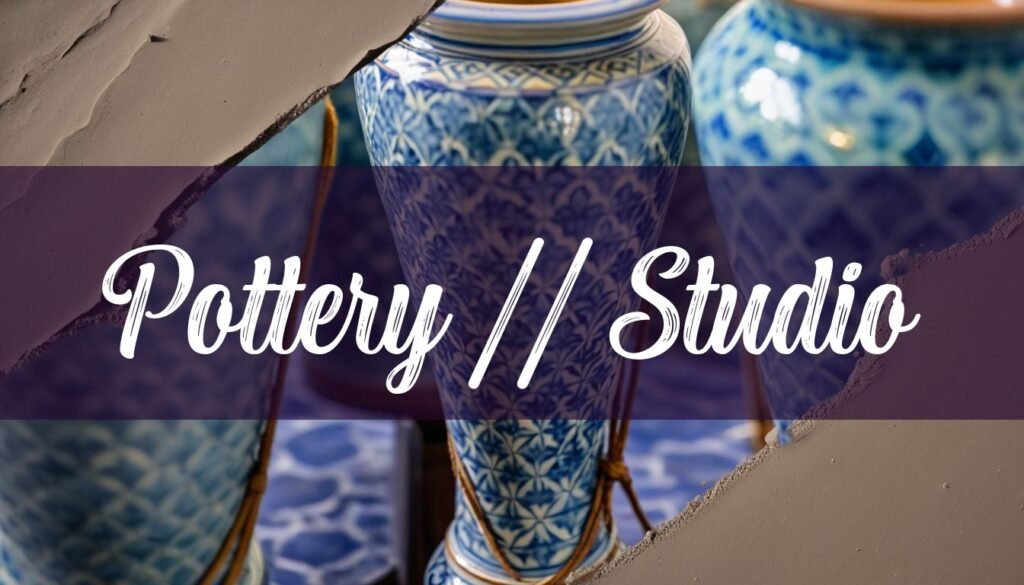Embarking on the journey of setting up your own pottery studio is an exciting endeavor, whether you’re a hobbyist looking to deepen your practice or a professional aiming for a fully equipped workspace. This comprehensive guide will walk you through the essential aspects of creating a functional and inspiring pottery studio, tailored to your specific needs and ambitions. Let’s explore everything from space selection and ventilation to equipment, safety, and initial material choices.
Selecting Your Space and Setting Up the Layout
The foundation of any pottery studio is the space itself. Whether you’re converting a spare room, a garage, or leasing a commercial space, the layout and environment are crucial. For hobbyists, a simple setup might include a wheel, work table, and shelving unit. If you’re planning for more extensive work, consider allocating space for a wheel, a work table, clay storage (ideally beneath the work table), shelving, a sink, a tool storage area, and separate areas for glazing and kiln firing.
When designing your studio, think about the flow of materials. Ideally, raw materials should enter at one end, move through the various stages of production, and exit as finished pieces at the other end. Consider zones for clay delivery and storage, wedging, throwing, hand-building, drying, bisque firing, glazing, and glaze firing. Efficient movement and minimal disruption are key, so strategically place pottery wheels, kilns, and glazing stations. Remember to plan for easy cleaning, especially of work areas, with waterproof flooring being a significant asset.
Essential Equipment and Tools
The heart of your pottery studio lies in its equipment. A potter’s wheel is often the first major investment. Brent wheels are a popular choice, known for their durability and suitability for various skill levels. Other reputable brands include Thomas Stuart/Skutt and Shimpo. For serious potters, the Brent C or CXC models, with 1/2 HP and 1 HP motors respectively, can handle larger clay quantities. If you are looking for an affordable pottery wheel, the Speedball Clay Boss Potter’s Wheel is great for both beginners and professional potters. Shimpo wheels are known for being quiet, making them ideal for shared spaces or classrooms.
In addition to a wheel, consider a sturdy work table. A 4′ x 8′ sheet of plywood covered with heavy canvas provides an excellent surface for preparing clay. Ensure the canvas is stretched tightly and stapled underneath. For glazing, cover your table with plastic or Formica, or ideally, use a separate table altogether. Shelving is also essential for storing work in progress. Simple wooden shelves work well, or you can create a wall shelf using 2x4s and 1″ dowels. An old refrigerator or a plastic-wrapped shelf unit can serve as a damp storage area for pieces needing further work. Other equipment to consider includes slab rollers, pug mills, ball mills, extruders, mixers, scales, spray booths, ware carts and wedging tables. If you’re considering a kiln, you might find troubleshooting tips for your electric kiln useful. Also, it’s worth noting that a well-organized studio can significantly benefit from effective clay recycling practices.
Don’t forget essential hand tools. A basic set includes a needle tool, wire tool, wooden and rubber ribs, a sponge, a wooden knife, trimming tools, a ruler, glazing tongs, a turntable, paint brushes for glazing, carving tools, throwing sticks, and calipers. The Mudtools Essentials Clay Tool Kit is a great set for beginning potters. A wheel bat system and a giffin grip can greatly improve throwing and trimming processes.
Safety Measures, Ventilation, and Material Handling
Safety should be a top priority in your pottery studio. Ventilation is critical, as working with clay and glazes can produce harmful dust and fumes. Install local exhaust ventilation around dust-generating activities, such as mixing and pugging clay. Ensure adequate intake of outdoor air and sufficient air changes per hour for the work area. For electric kilns, minimize bends in exhaust ducts to improve system efficiency.
Consider using a portable air purifier to further filter the air in your studio. Regular cleaning is also essential for managing dust exposure. Avoid sweeping, as it can launch dust particles into the air; instead, use a vacuum with a HEPA filter or wet cleaning methods. Always wear a respirator or other personal protective equipment when necessary.
Clay waste management and recycling is not just economical but also environmentally responsible. Unfired clay can always be recycled. Maintain separate, labeled buckets for different clay bodies. Add throwing water, splash pan contents, and clay scraps to the buckets. Mix the clay thoroughly with water to create a slip, then sieve it to remove impurities. Allow the slip to settle, siphon off excess water, and dry the clay on plaster slabs until it reaches a workable consistency. Remember to wedge the recycled clay well before using it again.
Initial Material Selection and Costs
When starting, select a few versatile clay bodies and glazes to learn with. For beginners, electric kilns are a good choice, ranging from $2,000 to $10,000. Electric wheels can range from $700 to $2,000. Clay costs around $20-$30 for 25 lbs. Depending on the scale of your studio, initial investments in clay, glazes, and tools can range from a couple of thousand to over ten thousand dollars.
The total cost of setting up a pottery studio can vary widely. A basic home-based studio might cost between $3,000 and $15,000, while a commercial studio could range from $20,000 to $150,000 or more. Costs will depend on location, equipment, and the scale of your operation. Remember that setting up a pottery studio is an investment that can bring years of creative fulfillment.





